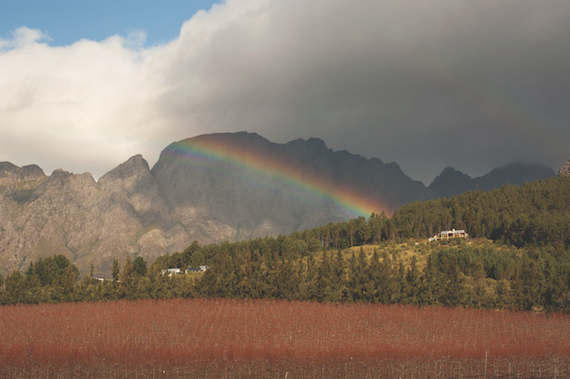Hegarty outlines the challenges for SA brandy as:
- Facing up to the competitive challenge from whisky and vodka for a consumer with an increasingly broad repertoire
- The image of brandy, still seen as the poor relation of the spirits market
- Health concerns, especially for younger consumers and women, who see brandy as a ‘hard’ drink.
As to opportunities, he foresees:
- “Tell the quality story. For KWV, for example, we can present, as one brand, a product journey from three years to five, 10, 12, 15, 20 and our new 30-year-old brandy. From 10 years up, our brands are 100% pure pot still which, in combination with the unique maturation conditions in Paarl, deliver an incredibly smooth textured product
- “Get our marketing act together. KWV has just launched a global trademark campaign entitled Finish Great. Focused on celebrating our personal journey of ups and downs, as well as the unique link to our brandy journey, this is a very special property;
- “Tell the value story – what other category can offer the equivalent of a 10-year pure pot still product for US$16? Promote quality mixers and drinking over ice.”
Edward Snell has four brands: Wellington VO, a value-for-money brandy, three and five-year-old matured, blended brandy; Oude Molen pot still brandy (three variants); Joseph Barry pot stilled, crafted brandy; and Ladysmith, also pot stilled, crafted brandy, produced in the small town of Ladysmith.
Whisky rivalry
Snell’s Schalk Van Wyk tells Drinks International that part of the problem with local consumption decline of brandy has been due to whisky.
“The local whisky marketers have done a fantastic job of educating South Africans on the intrinsic differences between whisky offerings – and, by default, creating a hunger to learn more. The success of the yearly ‘whisky festival’ held in three major cities across South Africa is testament to the education and appetite for whisky.”
He sees the local brandy industry as being governed by complicated and difficult-to-understand intrinsic regulations, so local brandy marketers have not been able to differentiate the offerings and drive brandy education.
He says: “But whisky has not just been successful due to intrinsic education – our historical background has led to a development of a previously unknown black middle class which has a hunger to express their success with premium/material goods, as most developing economies have seen.
“South Africans, generally speaking, deem imported goods better or more aspirational than locally produced – and thus the international credential of whisky has certainly helped to boost its premium queues within this market,” says Van Wyk.
Big advantage
But, according to Van Wyk, it is not all doom and gloom. “The big advantage of South African brandy has been the fantastic quality of its spirit. Many would argue that our brandy is superior to most cognac offerings and South Africa by far the best brandy-producing country in the world. This is backed up by the numerous awards the industry can claim over a long period of time. Our incredible quality of locally produced grapes, along with local brandy producers’ expert knowledge, has driven the above.
“I believe the future of South African brandy lies not in South Africa but in export markets and thus would require a rebranding of the brandy offering as whole. Similar to champagne and cognac, pot still brandy needs to insist on an appellation claim – which many local commentators feel should be Cape Brandy or Cape Pot Still Brandy.
“The pot still variant of the local brandy category needs to be romanticised too – similar to single malt. Needless to say, it’s not an overnight endeavour and would take a gentleman’s agreement among all local brand owners and the instigation of a new naming convention from local industry authorities,” says
Van Wyk.




